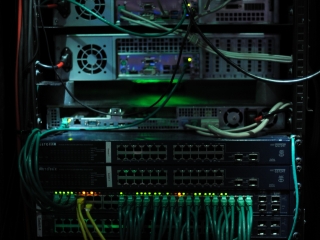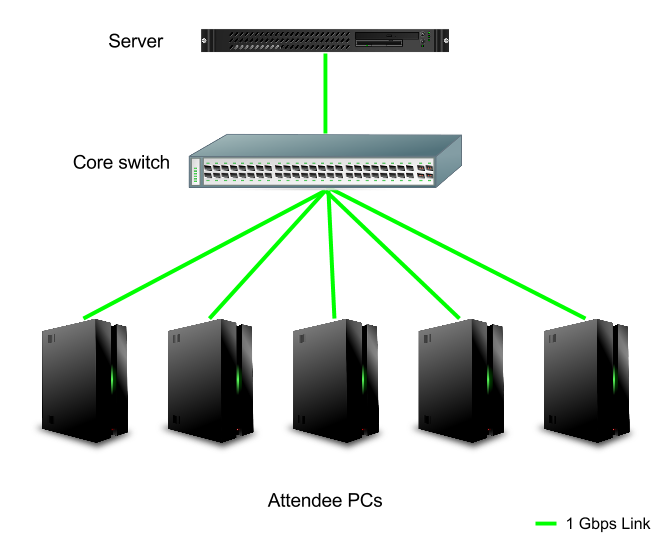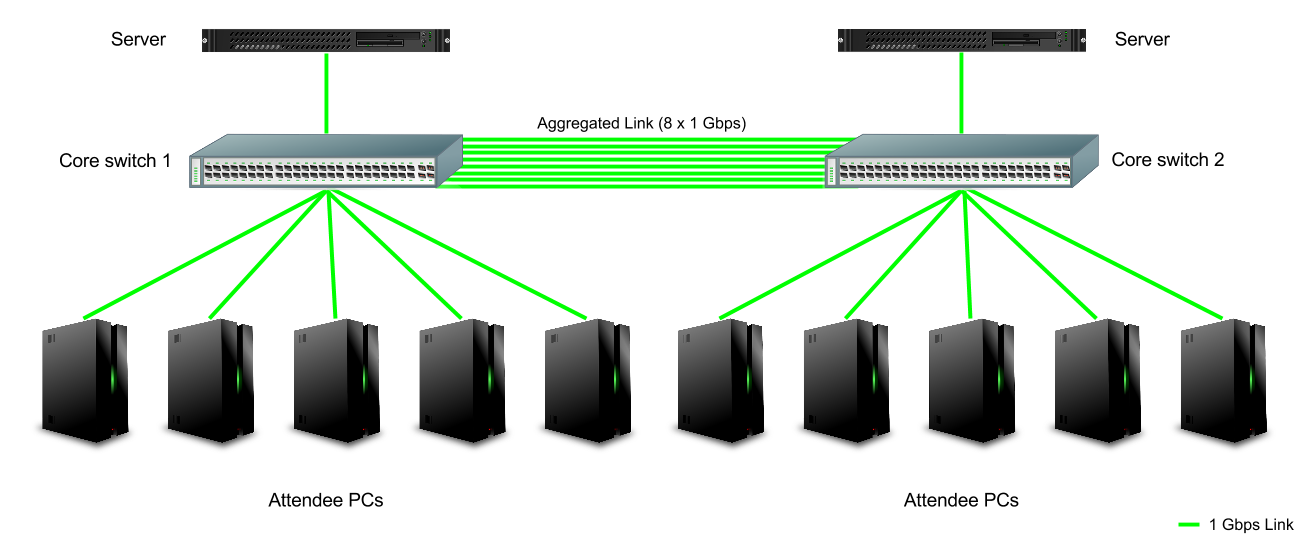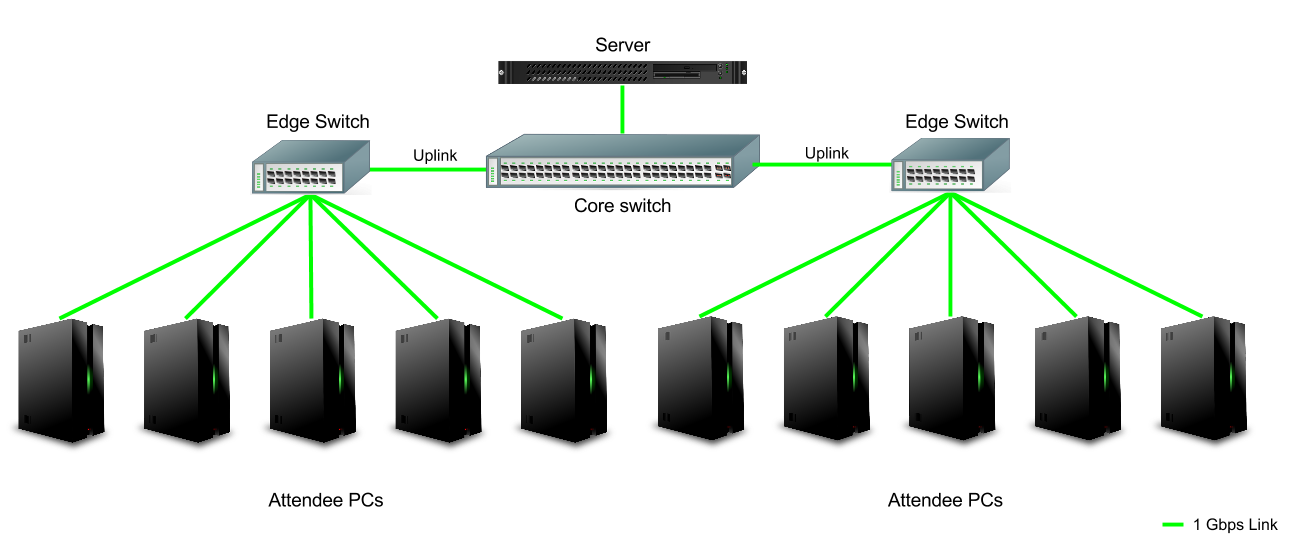For you techies out there we’d like to share the how and why of our LAN’s network. Unlike many other LAN party organisers our network design is not lead by convenience or economy – instead we’re dedicated to delivering maximum throughput to all attendees regardless of location.
We achieve this by giving each and every attendee a network cable, directly connected to our gigabit core switch. While this increases the total length of cable, and therefore cabling cost, it means that everyone can connect at full gigabit speeds and communicate with any other attendee PC or server at these gigabit speeds, all at the same time!
In short we eliminate network bottlenecks.
Here’s a simplified diagram to illustrate our network design:
This method of cabling is what’s deployed to office buildings and is known as structured cabling. We firmly believe that if it’s good enough for an office, then LAN parties deserve better!
We use 48 port Netgear GS748TS switches which have 96Gbps of internal switching bandwidth, also know as switching fabric. This magic number is 48 ports × 2 gigabits (1gbps in each direction). Currently we have all attendees and servers connected to a single switch, but as we expand beyond 48 ports we plan to use link aggregation to combine the bandwidth of 8 ports on each switch to give us a 16 gigabit link between the switches. What this means in practical terms is that it would take 16 people all transferring data at gigabit speeds, 8 on one switch and 8 on the other to start bottlenecking.
Diagram of our future network design:
Lets contrast with the typical alternative network design employed by other LAN parties – edge switches uplinking to core switches. In this configuration, attendees connect to a small inexpensive “edge” switches local to their block of tables, which are in turn connected – “uplinked” via a single or a handful of link aggregated ports to a larger “core” switch, usually in the server rack.
The keen eyed amoung you will be able to see the inherant bottlenecks in this configuration, which mean that if 2 (or more) attendees connected to the 1st edge switch want to communicate with 2 (or more) attendees on the other edge switch they will all have to share the 1 gigabit uplink between the switches, and compete with all other attendees on their respective blocks for bandwidth on that uplink. No good at all!
Some organisers combat the possibility of the uplink being saturated by using 100 megabit edge switches with a gigabit uplink port, meaning that 10 attendees would have to be saturating their connections before the uplink is saturated, but 100 megabit LANs are slo-o-ow. At least with gigabit everyone connected to the same edge switch can talk to eachother at the same time at full speed with no problem.
Don’t get me wrong, this design is perfectly valid and will work just fine for low bandwidth activities such as playing games and browsing the web, but as soon as attendees start downloading files from the organisers and eachother, the network uplink will become saturated and cause lag in games – not ideal!
So to wrap up, we’re very proud of our bottleneck-free gigabit network and would like to invite everyone to experience it first hand at our next event this May!




